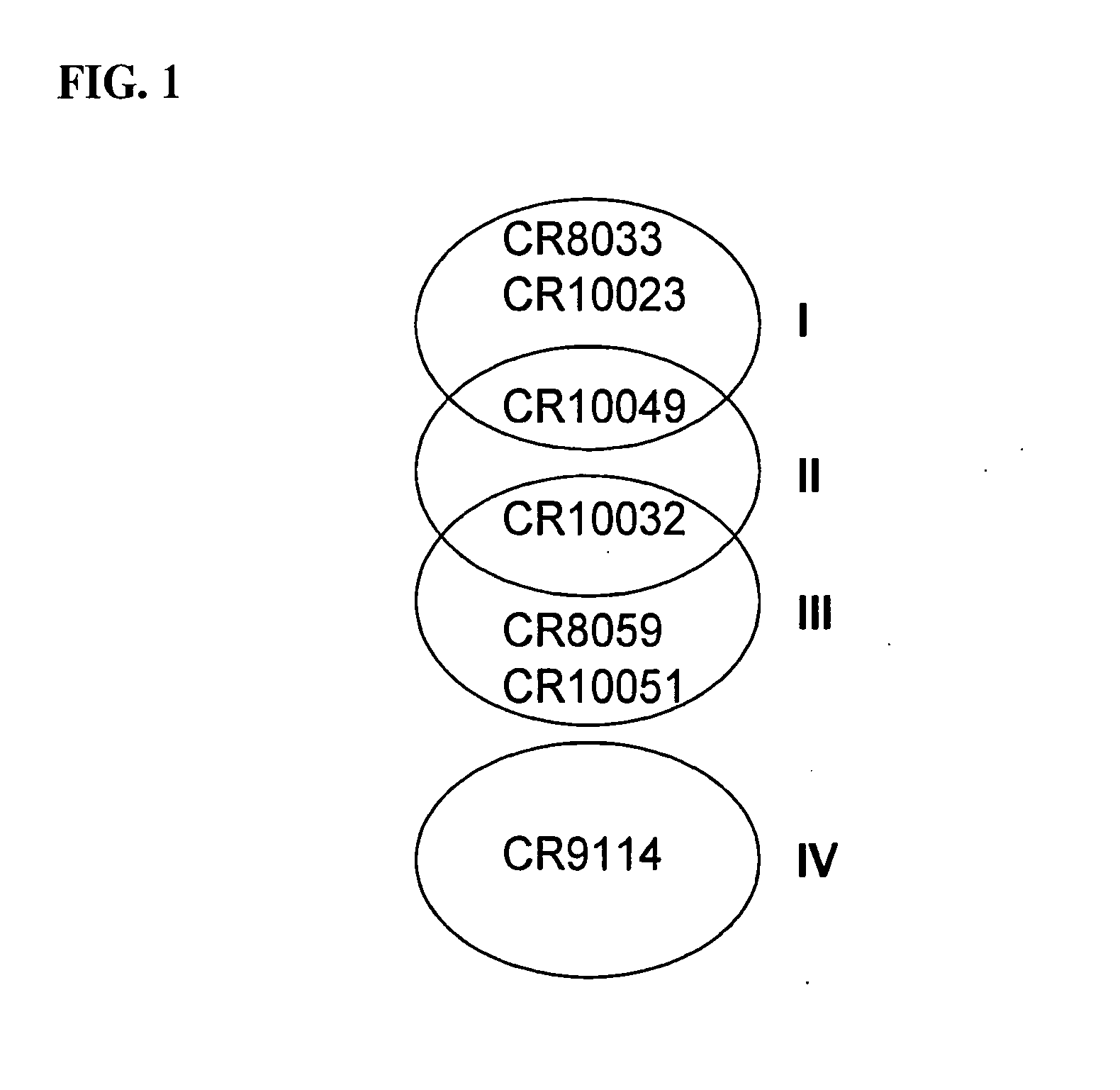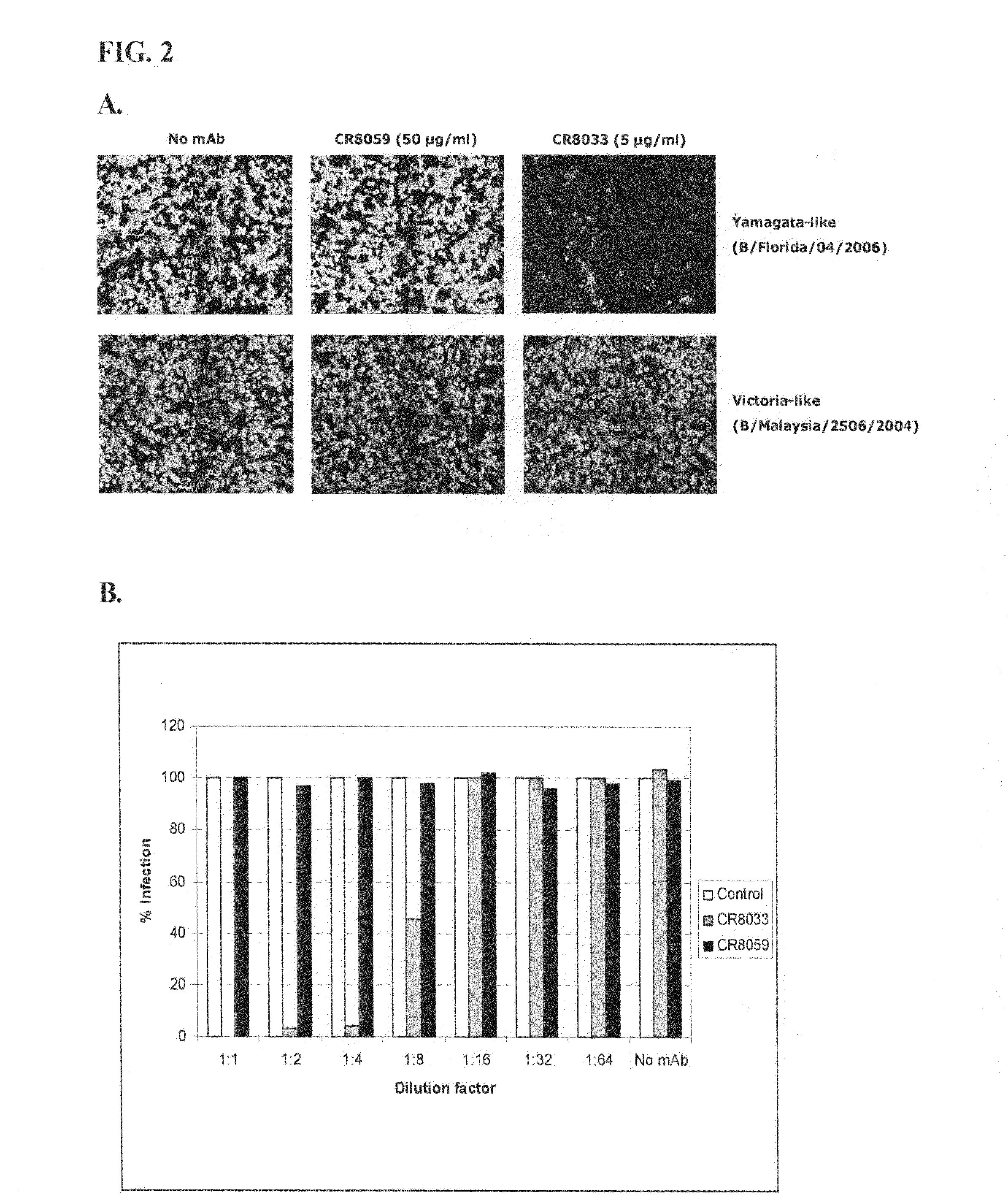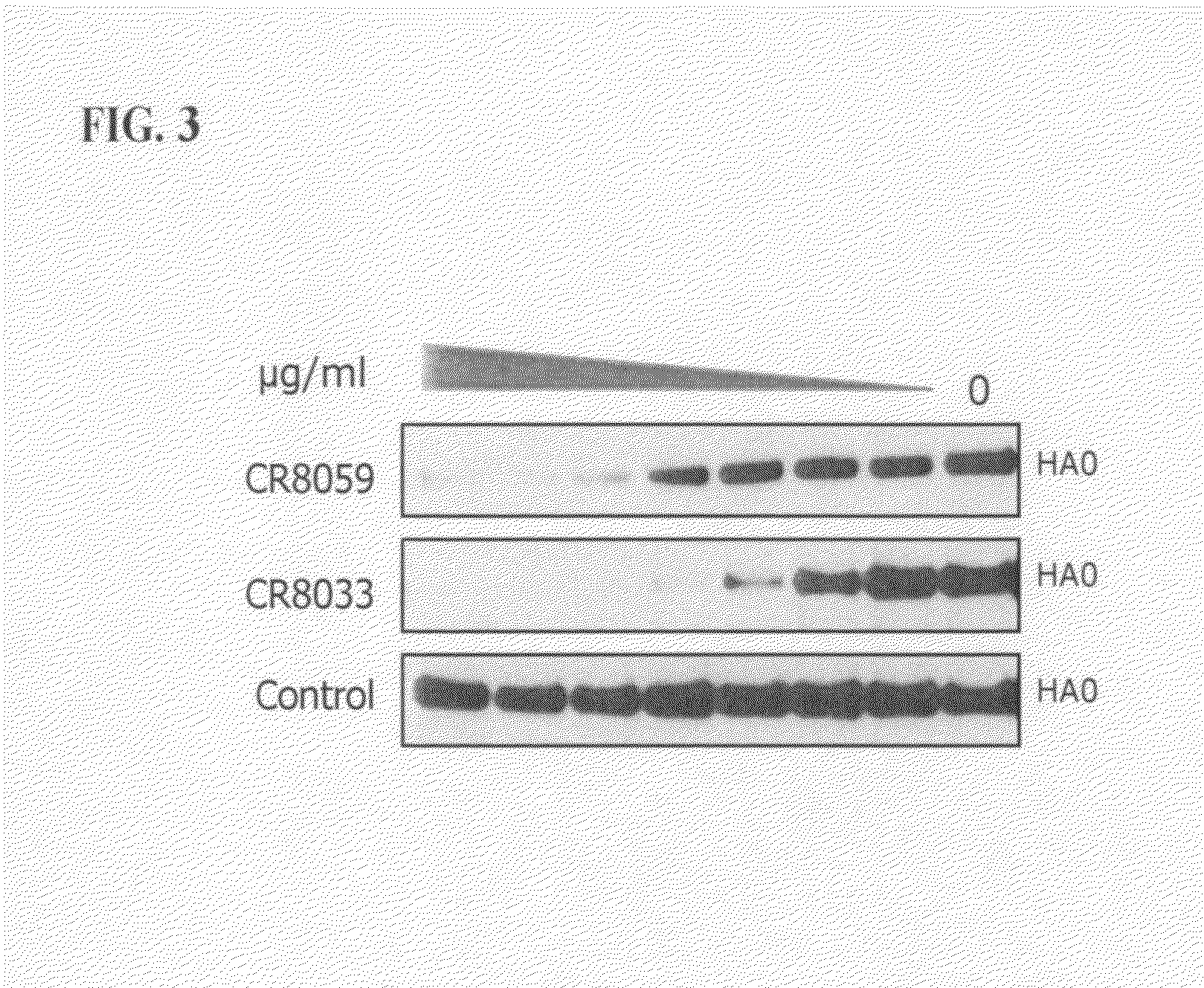Human binding molecules capable of binding to and neutralizing influenza b viruses and uses thereof
a technology of human binding molecules and influenza b viruses, applied in biochemistry apparatus and processes, sugar derivatives, pharmaceuticals non-active ingredients, etc., can solve the problems of large burden on health care costs and productivity loss, and achieve the effect of high economic impa
- Summary
- Abstract
- Description
- Claims
- Application Information
AI Technical Summary
Benefits of technology
Problems solved by technology
Method used
Image
Examples
example 1
Construction of scFv Phage Display Libraries Using RNA Extracted from Memory B Cells
[0171]Peripheral blood was collected from normal healthy donors by venapuncture in EDTA anti-coagulation sample tubes. Single chain Fv (scFv) phage display libraries were obtained as described in WO 2008 / 028946, which is incorporated by reference herein. The final library was checked for insert frequency with a colony PCR using a primer set flanking the inserted VH-VL regions (100-150 single colonies). Typically, more than 95% of the colonies showed a correct length insert (see Table 1). The colony PCR products were used for subsequent DNA sequence analysis to check sequence variation and to assess the percentage of colonies showing a complete ORF. This was typically above 70% (see Table 1). The frequency of mutations in the V genes was also analysed. About 95% of the sequences were not in germline configuration indicative of a maturation process and consistent with the memory phenotype of the B cell...
example 2
Selection of Phages Carrying Single Chain Fv Fragments Against Influenza B
[0176]Selection was performed using the antibody phage display libraries against recombinant hemagglutinin (HA) of influenza B (B / Ohio / 01 / 2005, B / Florida / 04 / 2006 and B / Brisbane / 60 / 2008). HA antigens were diluted in PBS (5.0 μg / ml), added to MAXISORP™ Nunc-Immuno Tubes (Nunc), 2 ml per tube, and incubated overnight at 4° C. on a rotating wheel. The immunotubes were emptied and washed three times with block buffer (2% non-fat dry milk (ELK) in PBS). Subsequently, the immunotubes were filled completely with block buffer and incubated for 1-2 hrs at room temperature. Aliquots of the phage display library (350-500 μl, amplified using CT helper phage (see WO 02 / 103012)) were blocked in blocking buffer (optionally: supplemented with 10% non-heat inactivated fetal bovine serum and 2% mouse serum) for 1-2 hrs at room temperature. The blocked phage library was added to the immunotubes, incubated for 2 hrs at room temper...
example 3
Validation of the HA Specific Single-Chain Phage Antibodies
[0178]Selected supernatants containing single-chain phage antibodies that were obtained in the screenings described above were validated in ELISA for specificity, i.e., binding to different HA antigens. For this purpose, baculovirus-expressed recombinant influenza B HA (B / Ohio / 01 / 2005, B / Malaysia / 2506 / 2004, B / Jilin / 20 / 2003, B / Brisbane / 60 / 2008 and B / Florida / 04 / 2006) (Protein Sciences, CT, USA) was coated (0.5 μg / ml) to MAXISORP™ ELISA plates. After coating, the plates were washed three times with PBS containing 0.1% v / v Tween-20 and blocked in PBS containing 2% ELK for 1 hr at room temperature. The selected single-chain phage antibodies were incubated for 1 hr in an equal volume of PBS containing 4% ELK to obtain blocked phage antibodies. The plates were emptied, washed three times with PBS / 0.1% Tween-20 and the blocked single-chain phage antibodies were added to the wells. Incubation was allowed to proceed for one hour; the ...
PUM
| Property | Measurement | Unit |
|---|---|---|
| concentration | aaaaa | aaaaa |
| total volume | aaaaa | aaaaa |
| total volume | aaaaa | aaaaa |
Abstract
Description
Claims
Application Information
 Login to View More
Login to View More - R&D
- Intellectual Property
- Life Sciences
- Materials
- Tech Scout
- Unparalleled Data Quality
- Higher Quality Content
- 60% Fewer Hallucinations
Browse by: Latest US Patents, China's latest patents, Technical Efficacy Thesaurus, Application Domain, Technology Topic, Popular Technical Reports.
© 2025 PatSnap. All rights reserved.Legal|Privacy policy|Modern Slavery Act Transparency Statement|Sitemap|About US| Contact US: help@patsnap.com



